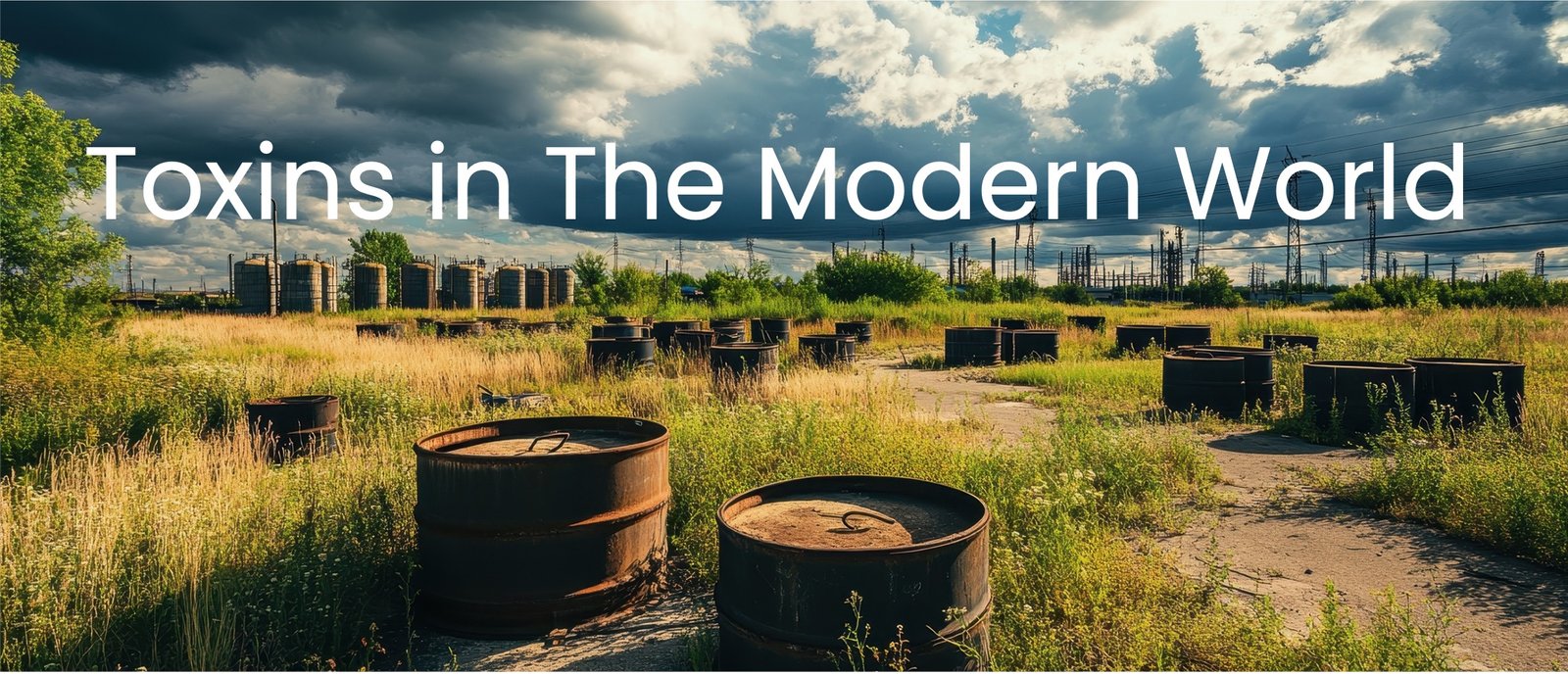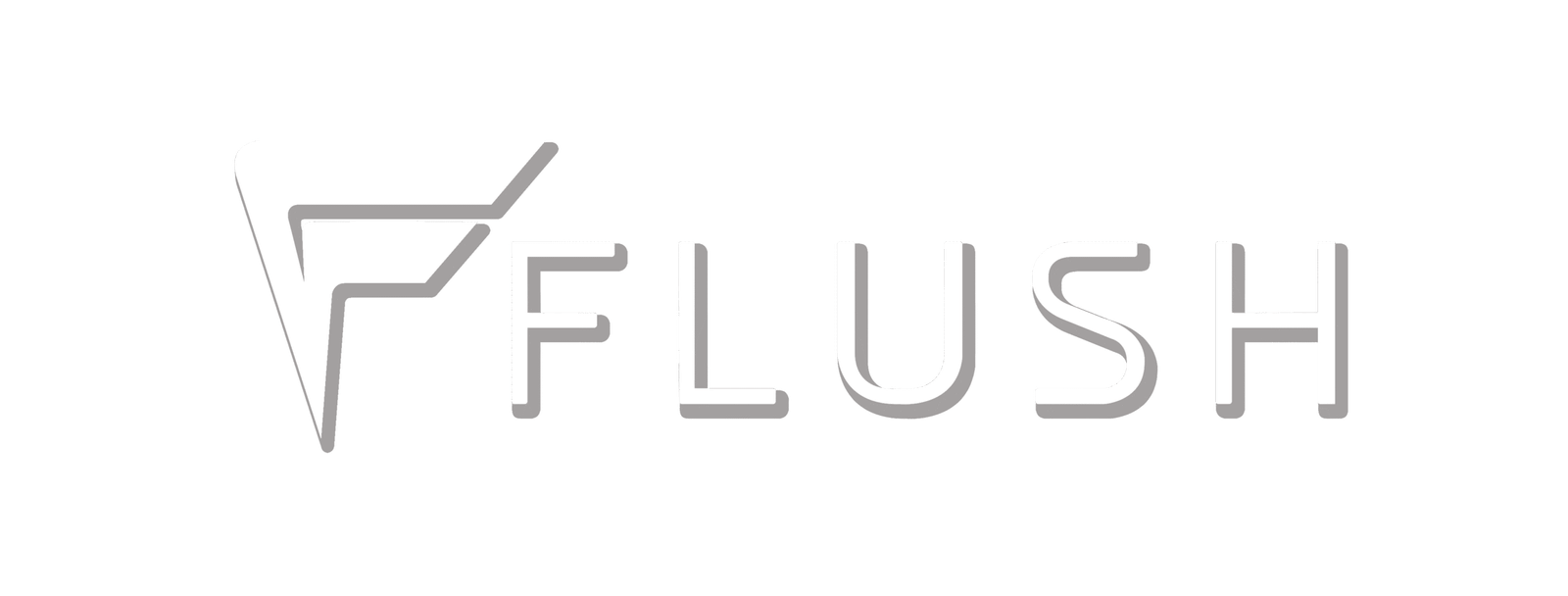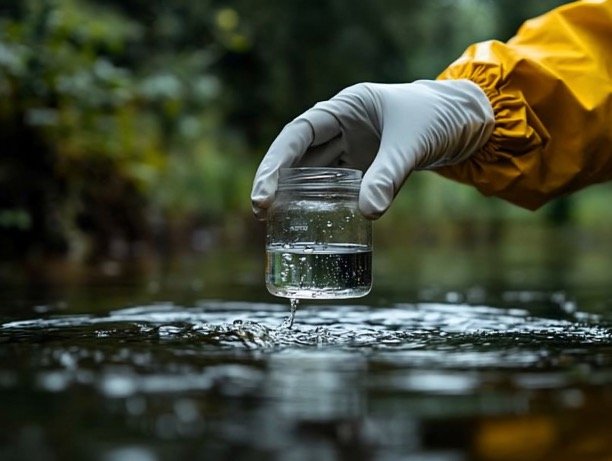
What Is a Toxin?
A toxin is any substance—natural or synthetic—that, when introduced into the body, interferes with cellular, biochemical, or systemic function. Unlike ordinary waste, many modern toxins are persistent, bioaccumulative, or small enough (nano-size) to slip past our body’s natural defenses.
Because we live in an industrialized environment, toxin exposure is constant: in water, air, food, household items, and even the fabrics we wear. Understanding the types, sources, and pathways of toxins is essential to defend against their cumulative damage.
Core Categories of Toxins
Here are some of the major groups of toxins you should understand:
PFAS (Forever Chemicals)
-
A class of thousands of synthetic compounds with extremely durable C–F bonds, resistant to breakdown.
-
Originally developed by companies like DuPont and 3M, used in non-stick coatings, stain-resistant fabrics, firefighting foams, food packaging.
-
Because they do not degrade, they accumulate in soil, water, wildlife — and humans.
-
Health impacts: endocrine disruption, immune suppression, thyroid dysfunction, increased cancer risk, liver & kidney strain.
-
In your body: PFAS bind to proteins in the blood, get distributed systemically, and can cross into organs and perhaps into the brain.
Microplastics & Nanoplastics
-
Small plastic particles (micrometers down to nanometers) created by the breakdown of larger plastics or from microbeads and synthetic textiles.
-
They act as vectors, carrying other toxins (PFAS, heavy metals, persistent organic pollutants) into the body.
-
They can lodge in tissues, cause local inflammation, damage cellular membranes, and interfere with microbiota.
Graphene Oxide / Advanced Nanomaterials
-
Graphene oxide and other engineered nanomaterials are used in electronics, coatings, sensors, and experimental medical uses.
-
Their nano-scale allows them to cross biological barriers (gut lining, blood-brain barrier).
-
In tissues, they may cause oxidative stress, membranes disruption, and inflammatory responses.
-
These new materials represent an emerging frontier of toxicity — we’re still discovering long-term effects.
Glyphosate & Agricultural Chemicals
-
Glyphosate (e.g. Roundup) is a widely used herbicide.
-
Its mechanism targets plant enzyme systems, but in humans it can disrupt gut microbiota, impair gut barrier integrity, and create oxidative stress.
-
Combined with pesticide cocktails (insecticides, fungicides), these chemicals increase the overall burden on detox systems.
Heavy Metals
-
Metals such as lead, mercury, cadmium, arsenic, chromium, nickel, etc.
-
These elements interfere with enzymatic processes, generate free radicals, compete with essential minerals, and damage organs (kidneys, brain, liver).
-
They have no safe threshold for chronic accumulation in many cases.
Phthalates & Plasticizers
-
Chemicals added to plastics to increase flexibility (PVC, vinyl) and found in cosmetics, fragrances, packaging.
-
They act as endocrine disruptors, interfering with hormone systems (especially reproductive, thyroid).
-
They can accumulate in fat tissue and persist.
Pathogens & Biological Toxins
-
Bacteria, viruses, parasites, fungi produce toxins or trigger immune overactivation.
-
Foodborne pathogens, gut-dwelling microbes, fungal mycotoxins, and others can produce burdens that stress the immune/cleanup systems.
-
Even low-grade chronic infections can contribute to systemic toxicity.
Nanoparticles
-
Very small particles (<100 nm) from engines, industrial processes, air pollution.
-
Their size allows penetration into cells, mitochondria, even nuclei.
-
They may carry surface-bound toxins, generate reactive oxygen species, or disrupt cell signaling.
Environmental & Electromagnetic Toxins
Household / Kitchen / Cookware Toxins
True detoxification starts at home. Limiting meals outside the home drastically reduces daily toxin intake.
-
Non-stick pans and cookware (PTFE, PFOA): shed fluorinated compounds at high heat.
-
Plastic containers/utensils: leach BPA, plasticizers, and microplastics when heated or degraded.
-
Tap water: often contains disinfectants (chlorine), fluoride, heavy metals, PFAS, microplastics.
-
Cleaning agents, aerosol sprays, candles/fragrance diffusers: release volatile organic compounds (VOCs) into indoor air.
Better Alternatives:
-
Use glass, ceramic, or copper cookware and utensils.
-
Prefer stainless steel, cast iron.
-
Store food in glass jars, stainless steel bottles.
- Choose distilled, natural mineral or Filtered water using reverse osmosis or activated carbon / specialized PFAS filters, for cooking and drinking — never tap water. These small, mindful changes enhance your food’s energy and purity.
Personal Care & Household Product Toxins
-
Deodorants, antiperspirants: may contain aluminum salts, parabens, synthetic fragrances.
-
Toothpaste / oral care: fluoride, triclosan, microbeads, synthetic foaming agents.
-
Face creams, lotions, cosmetics: parabens, phthalates, synthetic fragrances, nanoparticles (titanium dioxide, zinc oxide).
-
Cleaning products: bleach, ammonia, quats, synthetic detergents, VOCs.
Suggested Alternatives:
-
Unscented, natural deodorants (magnesium-based, baking soda–free line).
-
Fluoride-free, low-ingredient toothpastes with natural antimicrobials (e.g. neem, xylitol).
-
Cosmetics labelled “clean,” “paraben-free,” “fragrance-free,” “organic.”
-
Use vinegar, baking soda, castile soap, essential oils (sparingly) for cleaning.
-
Ventilate your space; use air purifiers with HEPA + carbon.
Electromagnetic / Frequency Toxins (EMFs, WiFi, etc.)
-
Electromagnetic fields from cell phones, WiFi routers, smart meters, Bluetooth devices are considered non-ionizing radiation.
-
Though still debated, some studies suggest prolonged exposure may stress cellular repair mechanisms, especially when the body is burdened with chemical toxins.
-
Cumulative load theory: the combination of chemical + electromagnetic burden may exceed the body’s capacity to adapt.
Practical Strategies:
-
Put phones on airplane mode when sleeping.
-
Turn off WiFi/routers at night.
-
Use wired (ethernet) internet where possible.
-
Use EMF-shielding materials, grounding techniques (earthing), distance from devices.
Toxins, the Brain, and Neurological Health
Many neurological disorders — including Multiple Sclerosis, Dementia, Parkinson’s, Alzheimer’s, and other degenerative conditions — share a common root cause: toxic overload.
Microscopic toxins, especially nano-sized particles, can breach the blood–brain barrier, disrupting neural function and hijacking your body’s natural health. These toxins accumulate silently from food, air, and water, creating an invisible internal burden.
Flush GBI helps clear these disruptive agents from the gut — the gateway to total body health — supporting a clearer mind, stronger immunity, and better neurological balance.
Why It All Matters & What You Can Do
Every one of these toxins — PFAS, heavy metals, glyphosate, microplastics, phthalates, pathogen toxins, nanoparticles, VOCs, EMFs — adds to your toxic burden. When the cumulative load surpasses what your body can safely detoxify, systems break down: gut permeability increases, inflammation becomes chronic, mitochondria are stressed, immunity is suppressed, and disease pathways open.
No one is immune to today’s toxic environment. Children are being borne with chemical burdens; rates of cancer and autoimmune disorders in the young are rising dramatically. A teenager today can carry the same toxic load as a 50-year-old adult. While we cannot escape exposure, we can manage and reduce it.
Flush GBI helps by cleansing, neutralising, and expelling many of these burdens — but it is not magic. To truly change your trajectory, you must also minimise exposure and build strong defenses.
Toxins and Human Reproduction
Modern toxins aren’t just damaging our organs — they’re silently rewriting the future of humanity.
Birth rates around the world are in decline, and science is now linking this directly to chemical exposure.
From PFAS and phthalates to heavy metals and microplastics, these toxins mimic and disrupt hormones, interfering with fertility and reproductive balance. Women are seeing increased rates of ovarian dysfunction, vaginal inflammation, and hormonal imbalance, while men experience reduced sperm count and motility — all direct outcomes of chronic toxic exposure.
What’s happening inside the body often goes unnoticed. Long before symptoms appear, these chemicals begin altering cellular communication, immune function, and hormonal regulation. Yet when toxins are removed and the body is cleansed, the remarkable truth emerges:
the body heals itself.
Flush GBI helps restore that natural intelligence. Once the internal environment is clean, the body resumes its natural rhythm — fertility improves, hormonal balance stabilizes, and vitality returns.
Across the world, a quiet revolution is taking place. New, independent innovators — not large pharmaceutical corporations — are developing products that work with nature, not against it.
Companies like NanoFarm and practitioners such as Dr. Heala represent this new generation of healing — understanding that regeneration begins at the cellular and environmental level.
Modern medicine, in contrast, has focused on suppressing symptoms rather than addressing their cause.
Pharmaceutical drugs can offer temporary relief but often introduce new toxic burdens.
Nature’s approach is different — it seeks restoration, not suppression.
The future of healing will not come from chemical invention but from biological restoration — through detoxification, nutrient renewal, and the intelligent use of nature’s own design.
Flush GBI stands firmly in that new era.
How Flush Helps & What You Should Explore Next
-
Flush GBI works deep in the gut where many toxins accumulate. It uses a proprietary formula that coats harmful molecules, aiding neutralisation and elimination.
-
This helps reduce loads of PFAS, heavy metals, microplastics, phthalates, and more — giving your liver, kidneys, and lymphatic systems less burden.
-
Post-detox, your body has a better chance to regenerate, repair, and fortify against future exposures.
🔎 To learn more about specific toxins — what they are, where they come from, how they affect you — check out our comprehensive Toxins Database:
👉 https://flushgbi.com/toxins-database

